If you're looking for the cheapest ways to keep your home warm to combat the rapidly rising energy costs this winter, we've done the research for you.
This guide will help you cut energy costs while staying warm — whether you have £6,000 for underfloor heating or just £20 for draught-proofing — each strategy should make a noticeable difference.
We’ll show you how to keep your house warm, what it'll cost, and how much you could save on your bills.
We've researched for you, so all you need to do is read through and decide on the best options to help keep you snug this winter.
How much energy do I use?
But first, here’s the context you need to know;
According to Ofgem’s data, the average medium-usage UK household uses 2,700 kWh of electricity and 11,500 kWh of gas annually.
With the January 1st (2025) price cap, the average household costs are about £893.65 for electricity (at 24.86p/kWh + 60.97p/day standing charge) and £844.62 for gas (at 6.34p/kWh + 31.65p/day standing charge), totalling £1,738.28.
Ovo Energy estimated that 77% of the gas bill, approximately £650.35 at the latest price cap, is spent on heating.
These figures should be used as a guideline, but actual usage may vary, so consult your energy supplier for your exact usage figures.
Gas vs electricity for heating
There's a huge misunderstanding that using electricity to heat your home is more expensive than using your gas-powered central heating system.
Although gas is cheaper per kWh, making it appear more efficient for heating an entire house, this doesn't account for how we use our homes. We rarely require all rooms to be heated simultaneously.
Heating a single room with electricity may cost more per kWh than gas. Still, it often results in lower overall costs because you only heat the space you use, rather than the entire house.
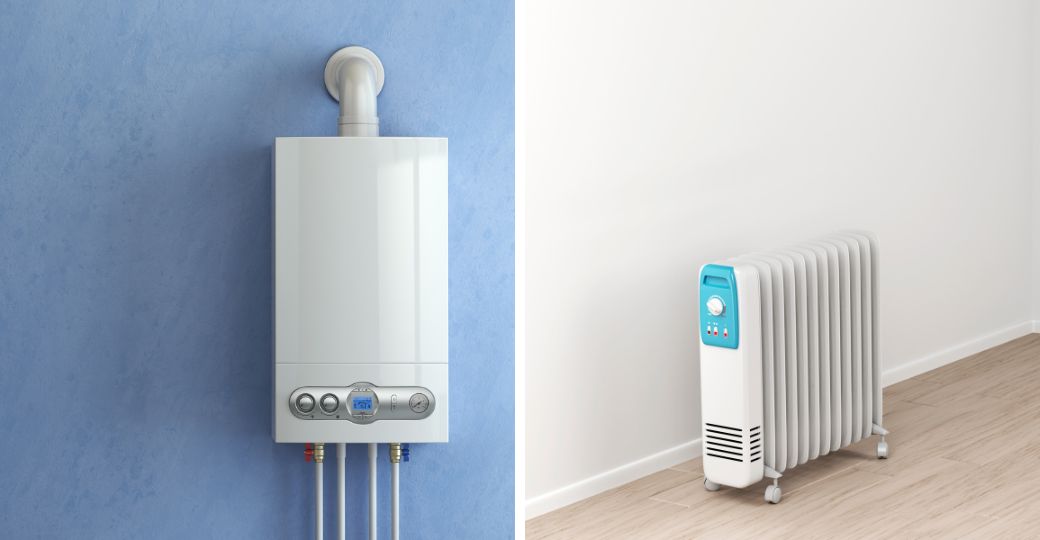
For example, heating five rooms with a 24kw gas boiler might cost £1.52 per hour at full capacity. In contrast, an electric heater for one room could cost under 25p per hour.
You might think that you could just turn off all radiators except for the ones in the one room you use the most. However, this doesn't translate to a proportional cost saving due to heat losses in the pipes.
Installer Online suggested that a typical home could save £60 per year by insulating all pipes throughout the home, equating to £79.25 with the current price cap.
This means that about 15% of your heating costs could be lost through the pipes throughout your central heating system. By leaving four out of five (80%) radiators off, your savings might only be around 65%, not 80%.
Our experiments found a small 700w–1000w ceramic heater sufficient to comfortably warm a large living room, meaning our costs could be under 25p/hour using electricity.
The cheapest way to stay warm
From our research below, the cheapest way to heat your home is first to heat yourself. Then, your immediate surroundings. Next, the one or two rooms you are using. Finally, minimise the time and energy you spend heating the whole house at once.
If you have to burn energy to create heat, consider heating the smallest space required to feel comfortable.
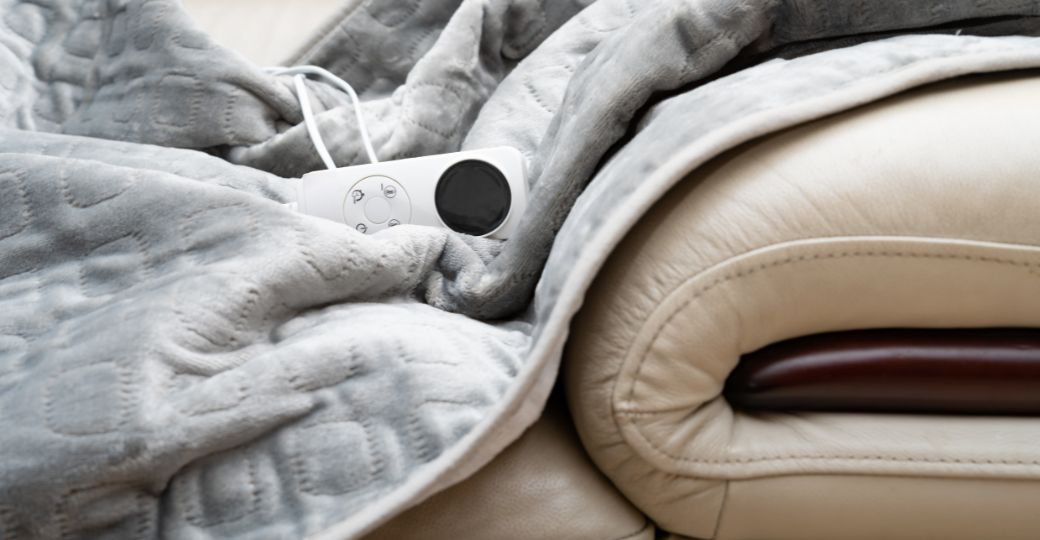
Our research showed us that if you can be comfortable just using an electric blanket, it’s possibly the cheapest way to keep warm in winter.
The cost savings will break even with the cost of the blanket in as little as 27 hours of use. That's less than 4 hours/day for a week.
If you can get by just heating the one room you're using, a 2kw electric heater or 1,500w infrared heating could suffice. This could save £1.02/hour for a standard electric heater or more than £1.15 for the infrared unit versus central heating for the whole home.
The 15 cheapest ways to heat a house this winter
We've tested most of the below strategies to heat our homes ourselves and found them to make a noticeable difference to our comfort during winter.
We're not suggesting anything that may pose a substantial risk, such as filling your home with candles or open fires. Open flames pose a serious fire risk while also worsening indoor air quality which may cause health issues.
Please follow the manufacturer's guidance for your boiler or other products you intend to use to ensure you keep your home warm and safe.
Reduce your boiler's flow temperature
Changing the boiler's flow temperature is a simple trick most households with a condensing boiler can use to save on their heating bills quickly.
Typically, boilers are set to a high flow temperature of 75°C, leading to high return temperatures and heat loss through the flue. Lowering the boiler's flow temperature means less heat is wasted when the water returns. Doing so keeps more heat in the system and reduces the energy needed to maintain hot radiators.
The graph demonstrates that boilers are most efficient when heating cooler water and become less efficient as the water's temperature increases. As depicted by the line's downward trend, the 'dew point' marks where additional heat recovery starts, enhancing efficiency.
Install a smart thermostat
You may have heard that smart thermostats can save double-digit percentages on your heating, but the reality is that the savings are highly variable.
If your schedule is consistent – e.g. you go out and come home at the same times daily, have no unexpected trips and so on – they may pose very little benefit that you couldn't already get using a traditional timer thermostat.
However, smart thermostats can, for instance, turn your heating on when you travel home (by tracking your location through your phone and understanding when you are getting near). They can also turn your heating on low during the depths of winter, even when you're not there, to prevent your pipes from freezing.

The various benefits can be a little gimmicky depending on your lifestyle, so not everyone will use them. While a smart thermostat can save you money, it may not save much if you already have your heating on an expertly-set timer, but it would make it easier to manage.
Another caveat to the savings is that according to Which?, many manufacturers are basing their estimated savings on inconsistent data and may be incorrect.
Hive, for example, estimates an annual gas usage of 37% higher than Ofgem, and Tado estimates under the assumption that the heating is turned on for three times longer than average. So, expecting to save as much as the manufacturer suggests may result in disappointment.
You might, therefore, reasonably expect to save no more than 10% of your heating bill.
Draught-proof door & window frames
Draught-proofing your windows and doors is a very effective way to trap heat, especially if there are large gaps around window and door fittings.
For less than £20, you can buy up to 30m of self-adhesive draught excluding strips from Amazon or a DIY retailer, which can be fitted to the inside of door and window frames.
Expect to spend at least five minutes per window or door to wipe clean the frame, measure up and cut the strips to size before sticking them in place.
The difference they make can be huge for such a quick solution.
Just by sealing the doors and windows, our Victorian-era terraced house gained at least 1°C–2°C per room. It also remained much warmer during the winter months when the heating was on.
Draught-proof your letterbox
If you can feel cold air coming through your letterbox, it's easy to solve by fitting a draught excluder with brush strips that keep the cold out. The difference depends on how much wind gets through, but it can raise the temperature near your door by at least 1°C–2°C.
These can cost under £15, and you can also get cashback at Screwfix.
Hang thermal curtains
Thermal curtains are long, thick, insulated curtains which lock the heat in to prevent it from escaping through the windows and to stop the cold air coming in during the winter. But they also do the opposite to keep your home cool during the summer.
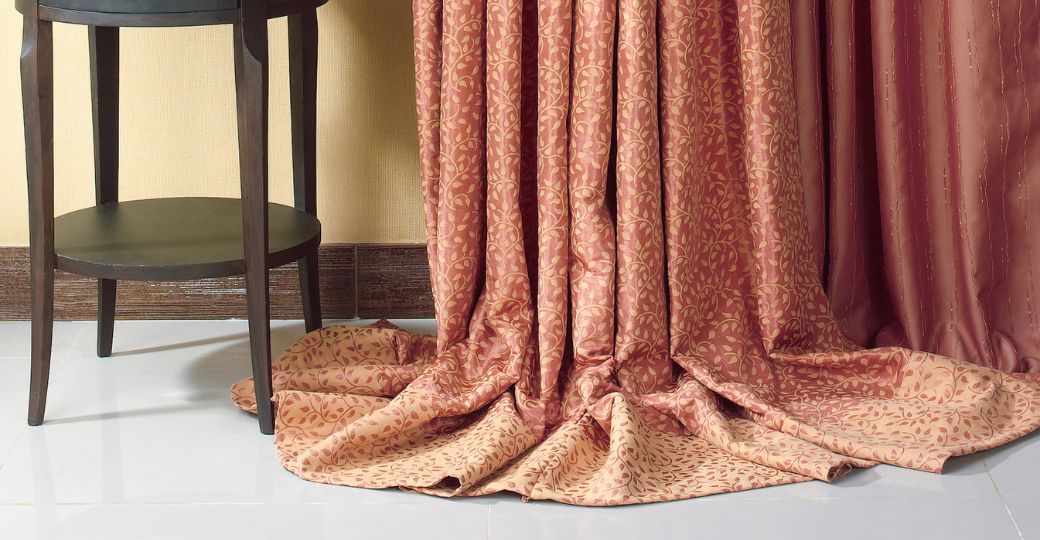
These are quite heavy and more suited to a pole rather than a rail, but they can also be hung up in hallways and by doors to keep the warmth from circulating to areas where you don't need it.
They are very effective and keep rooms noticeably warmer during the winter, but to get the best curtains, you should look out for:
- multiple fabric layers, three ideally
- thick, tightly-woven fabrics
- ideally polyester or microfibre (to resist moisture buildup)
- long and wide enough to extend at least three inches past the edges of window frames
According to the US Department of Energy, thermal curtains can reduce heat loss by 25%.
Put ceiling fans on reverse
According to the University of Arkansas, running a ceiling fan in reverse during the winter helps. It mixes the warm air, which naturally rises, with the cooler air nearer your living area, saving 20%–30% on heating costs.
Due to the upfront cost, we only recommend this tip if you already have ceiling fans.
According to Checkatrade, the cost to buy and install an average system is about £540. According to eco cost savings, the average system wattage is just 32.1 watts (about 1p/hour to run).
*To maximise the impact, you may need to install multiple fans (one per room) to reach the suggested savings rate.
Install radiator reflector panels or foil
The theory is that while heat from your radiators warms the room, it also escapes into the wall directly behind it, using energy you likely won't feel.
This can be particularly wasteful if the wall in question is an exterior wall (as you’ll lose the heat to the outside air) or a connecting wall (as you’ll end up heating next door’s room instead of your own).
According to one review, installing plain foil behind a radiator can reduce the energy used in a small room by 60kWh each year, equivalent to about £4 annually.
If the same saving can be made in five rooms in your home, that's 300kWh saved per year or about £19 annually.
Use portable space heaters
While space heaters are pricey to run per kw of heat produced, they heat only the room you're in instead of the whole house.
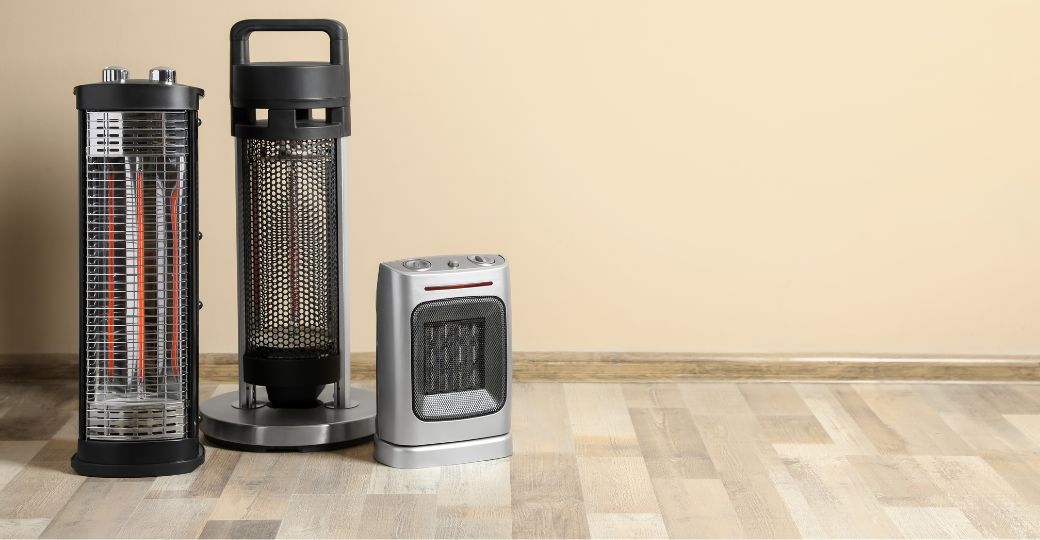
These can be more expensive per kilowatt hour of heat produced (compared to gas), but heating the entire house will waste a lot of energy on the rooms you're not using, ending up more expensive overall.
For example, if there are five rooms of equal size in your home and you only use one, then 80% of the energy used by your central heating system is wasted.
You're using much less energy by only heating one room at a time, drastically lowering your costs.
A space heater using 2kw of electricity could cost 50p/hour, compared to a 24kw gas boiler costing £1.52/hour to run. You wouldn't want to heat every room with a space heater, but heating just one or two can be very economical.
You could, of course, heat three rooms using 2kWh space heaters, which could still be cheaper than running your central heating system on full.
Use electric blankets
Electric heated blankets are less about keeping the house warm and more about keeping you warm.
This is a nice example showing that by heating just the area of the room you're using, you need to use significantly less energy to feel the warmth.
It is important to note that there are two main types of electric blankets: fleece-type blankets that wrap around you and under-bedsheet blankets which heat your bed. Typically, we recommend the former, which can be used for both.
An electric blanket may only require 85w of electricity to run, equating to a cost of roughly 2.1p/hour.
A large blanket that can wrap two of you up can set you back by £40–65, but can save £1.50 per hour of use.
Compared to running the central heating, the energy savings will pay back the cost of a typical 85w blanket in just;
- ~27 hours of use for a £40 blanket
- ~33 hours of use for a £50 blanket
- ~44 hours of use for a £65 blanket
Safety:
You might have heard of stories of electric blankets catching fire in the past. While that should be less of a concern with modern products, London Fire Brigade have some guidance to ensure your safety, such as replacing the blanket every ten years.
Try under-rug heating
Somewhere between an electric blanket and underfloor heating is the under-rug heating solution. RugBuddy is an electric blanket that goes under your rug and warms the area directly above it.
This is less efficient than warming yourself directly with an electric blanket, as it heats a larger area, and the warmth escapes into the rest of the room. However, it is far more cost-effective than installing underfloor heating.
A 125x160cm system costs £229 and takes 250 watts of electricity, which, at 24.86p/kwh, costs just 6.2p/hour to run. If this saves you £1.46 per hour of use compared to running your central heating, the savings in energy will pay off the cost of the RugBuddy in about 157 hours. That's about 2.5 months at a little over two hours each day.
It is worth noting that as this system is only 250w, it won’t provide enough warmth to heat the room. But, it may be enough to mean you need to use the central heating a little less often.
Use an infrared heater
A great alternative to the typical electric space heater is a little–known option that can often hang from your walls as a mirror, piece of artwork or stylish glass panel.
Infrared heaters work by directly warming the objects in the room, much like how you feel heat from the sun. They are more efficient to run and heat up much faster than other heaters.

These are simple to install – either buy a model that hangs from the wall or a free–standing one – and are so efficient that they can save £1.15 per hour compared to central heating.
According to Homebuilding, studies show that convection radiators require 40W/m³ to heat the air while infrared requires only 25W/m3 to heat a room - about a 37.5% energy saving.
These can be up to 53% cheaper to run than electric storage heaters, but compared to gas central heating, they are still more than 30% more expensive to run.
The takeaway is to heat just the one or two rooms you need using infrared heaters rather than the whole house, and this is how we arrive at the £1.15 per hour saving.
Keep doors and windows closed
Heating your home is a science, but keeping windows and doors open interrupts the convection currents created by your central heating system.
Radiators work by heating the air immediately surrounding them, and this warm air rises. The air moves around the room before cooling and falling back to the floor, where it is pulled up by your radiator to heat once more.
This is called a convection current, which can be a very effective way to heat a room.
Keeping doors open stops the current from working efficiently, as air is mixed in from other rooms or outside. Hot air may also escape, meaning your radiators have to work longer to heat the room.
By shutting doors and windows, your central heating system could run cooler - using less energy (or for less time, which therefore uses less energy), saving you money that would otherwise be wasted.
Insulate your roof and loft floor
You can lock the heat in by insulating your home, but doing so can have a large upfront cost.
Adding roof insulation or loft insulation involves adding an insulating material, such as rock wool, over the loft floor and inside your roof. These materials prevent heat from passing through them, keeping the heat inside your home from escaping.
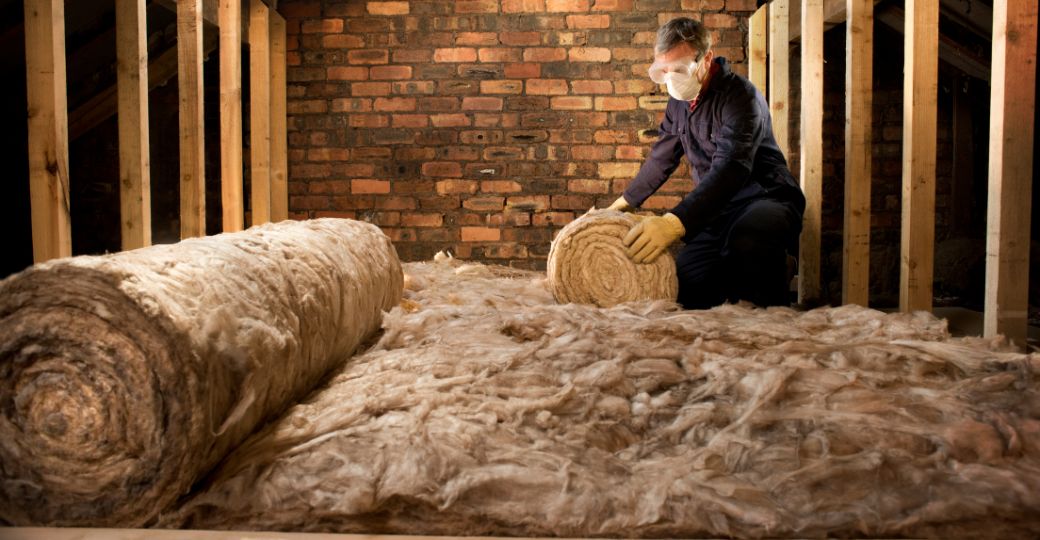
According to the Energy Saving Trust, it can typically cost £850 to install 270mm of rock wool in a mid-terrace property.
Savings can be as high as £200/year for that same mid-terrace house if previously uninsulated. If prices keep rising, the yearly savings could even meet or exceed the cost.
Detached houses with no current insulation will benefit the most, with a £1,100 typical insulation cost but savings of £380/year (34% paid off in just one year).
You may also be eligible for free or discounted insulation through one of several schemes run by the government and the big energy suppliers.
In most cases, discounts will be available only to those who receive certain benefits, and some are only available to homeowners. Unfortunately, if you rent your home and/or receive no benefits, you will unlikely be eligible for many / any discounts.
Energy Company Obligation (ECO) is available to low-income and vulnerable households and operated by energy companies, which often offer discounted or free loft or cavity wall insulation.
Invest in a ground-source or air-source heat pump
You might have heard of heat pumps as the latest replacement for the traditional gas-powered boiler as your home's main source of hot water.
These work like an inverted refrigerator. Instead of absorbing the heat inside the building and transferring it outside (as with a fridge), a heat pump will absorb heat outside or underground and transfer it into your home.
While these can cut your costs, some caveats include;
- significant upfront cost to buy and install a system
- significant space required
- installation process can sometimes disrupt your garden
Air systems draw warm air using a fan and require little space, as what looks like an air conditioning unit is fitted outside your home. These can produce a little noise, but it's not significant.
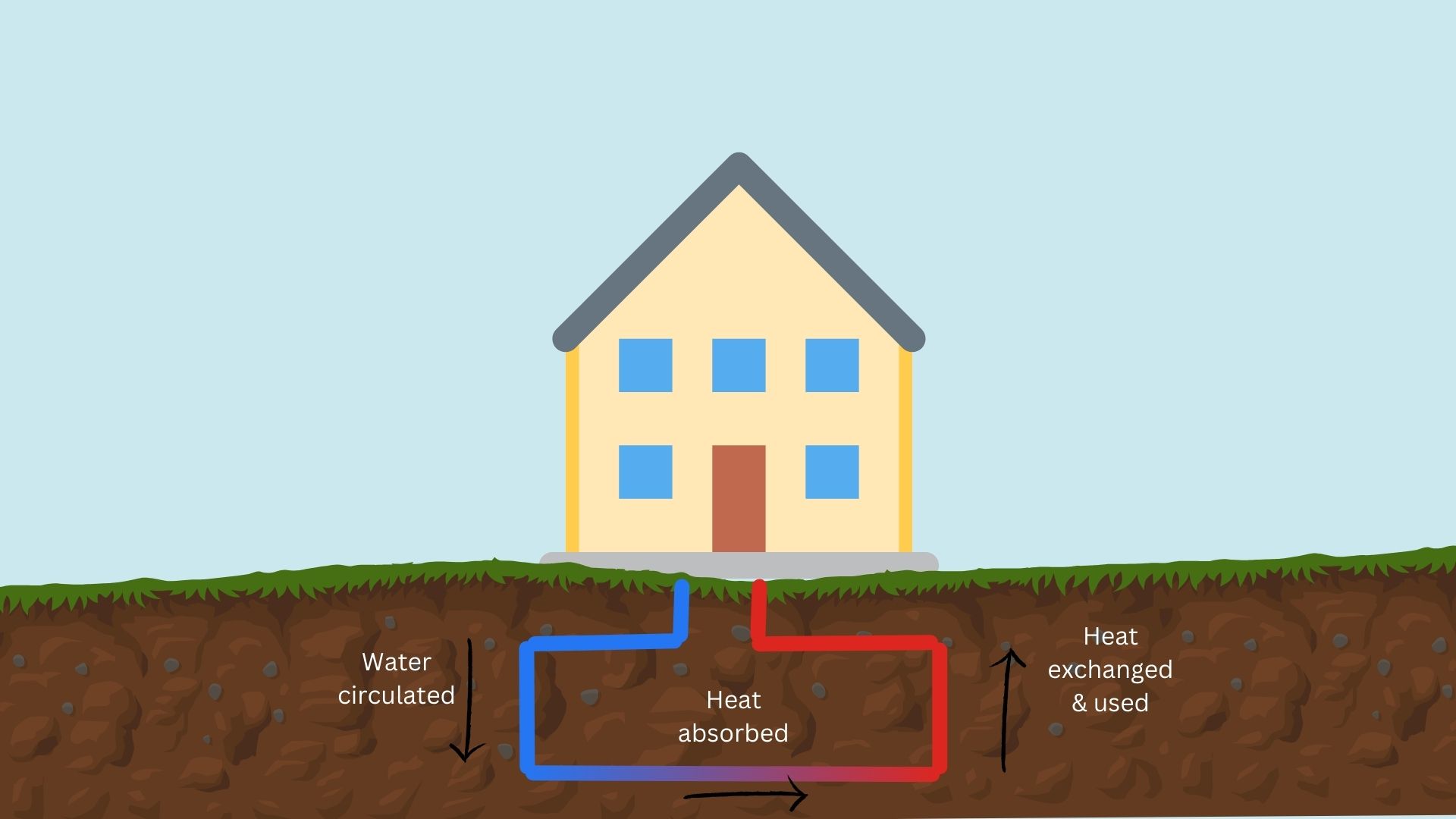
Ground systems, however, draw heat from the ground and may require a large amount of your garden to be dug up for pipes, with a fridge-like pump appliance installed inside your property. These systems take up much more space than air systems and may only be suitable for some homes. But, a ground source heat pump is often more efficient to run, reducing your running costs.
Typically, the further north you live, the more effective a ground system will be. Living further south would make air systems more effective because of the difference in average air temperatures throughout the year.
We don't recommend: underfloor heating
Underfloor heating is an efficient way to heat a room, but it does come with a large upfront cost, and you can choose between a wet or dry system, which each has its pros and cons.
A wet system is plumbed into your boiler or heat pump and thus is very low cost to run but high cost to install. A dry system uses electric cabling to provide heat, which is significantly cheaper to install but more costly per room.
It works by heating the room's floor, which acts as a large radiator to distribute heat. It can be more efficient than a traditional radiator because it runs at a much lower temperature, so doesn't need to burn so much energy to heat the room.
The drawback is that it can take longer for the room to reach your desired temperature, but wet systems are said to be 25% more efficient than traditional radiators.
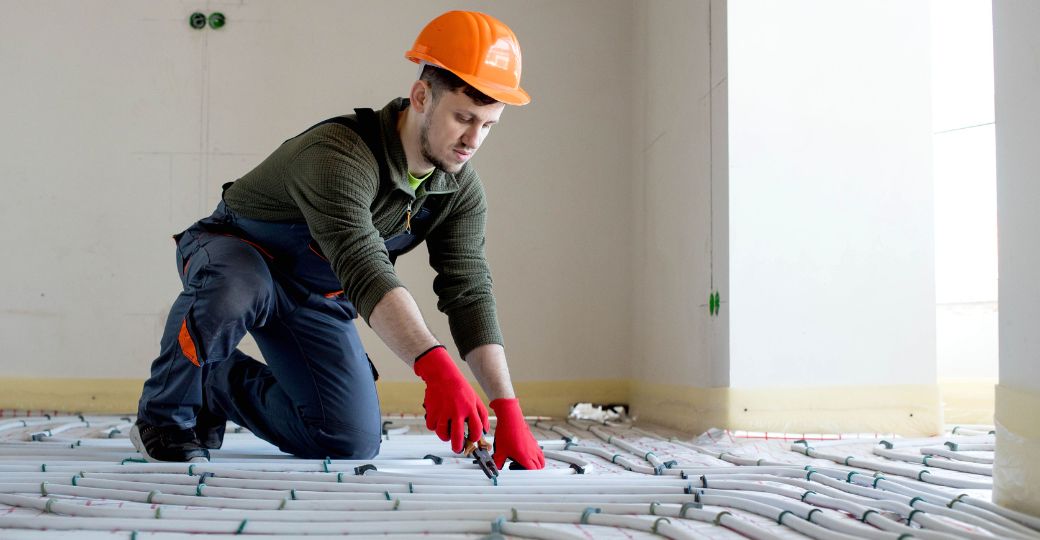
Typically, you would consider underfloor heating when renovating or replacing the floor of a room. However, some systems are available to retrofit over existing concrete and timber floors.
According to nu-heat.co.uk (and using the latest figures), their cheapest 20m2 kit costs £879 to purchase, and running costs for a 20m2 room per year with underfloor heating are;
- £914 for a dry (electric) system
- £205 for a wet (water) system
Checkatrade suggests installation costs can be up to £85/m² for electric and up to £110/m2 for water underfloor heating systems. In keeping with nu-heat's 20m2 room estimates above, the installation costs could be up to £1,700 for a dry system and up to £2,200 for a wet system.
Based on those figures, the cost of a wet system of this size has come down by £1,500 since we first published this article.
Suppose that a wet system cuts energy usage by 25% per room and 1/5th of the home is heated with underfloor heating. This equates to a 5% total reduction in energy use, saving about £26/year and taking over 84 years to break even.
Because of the return period, we don't recommend this as one of our best ways to keep your home warm during winter. Unless, you don't care about the cost (in which case, why are you reading this guide?).
Next steps to keep your home warm this winter
Keeping your home warm through the winter is unaffordable for most of us, with millions of Brits leaving the heating off during cold snaps in recent years.

By adopting a few of the strategies above - from simple draught-proofing to efficient heating alternatives - you can enjoy a cosy winter while keeping your costs in check.
Remember, every little action counts.
Sealing your doors and windows or using thermal curtains can make a noticeable difference to your comfort and won’t cost a fortune. Each action contributes to a more energy-efficient home that is kinder to the planet and your bank account.
Follow these steps:
- Assess your needs: think about which of these tips you can implement right away with little effort or cost.
- Reduce waste energy: reduce the amount of energy escaping your building (insulation and draught proofing, for instance) before you look at more efficient ways to heat it.
- Plan larger investments: before considering more costly interventions like a heat pump, weigh the upfront costs against long-term savings and only invest if it's right for your situation.
- Stay informed: the energy price cap is due to change every three months, and new government grants for insulation or more efficient heating could make a major difference to the cost of next winter.
- Spread the warmth: share what you’ve learned with friends and family. Sometimes, the most effective way to save it is by helping others do the same.
Ultimately, every degree of warmth and every penny you save is a step towards a more comfortable and sustainable home.
Have tried any of these strategies to keep your home warm during winter? Or do you have other suggestions we can try?
Let us know in the comments what you've tried and we'll keep this article up to date with the best suggestions.

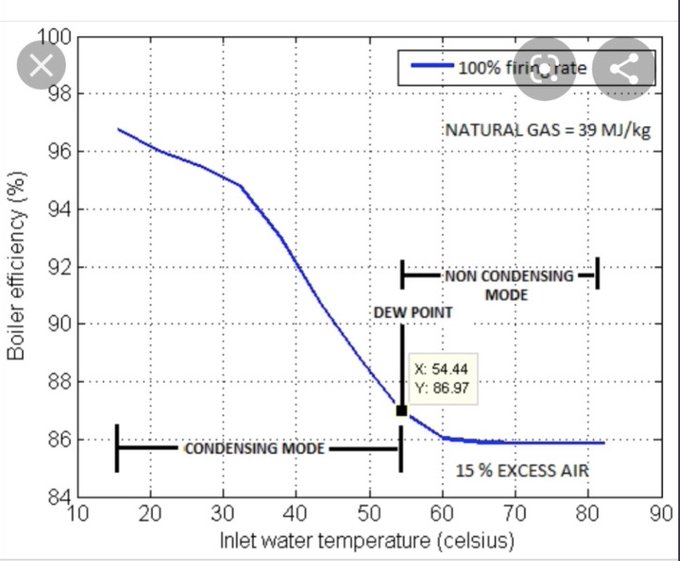
 Get £15 cashback for joining TopCashback
Get £15 cashback for joining TopCashback